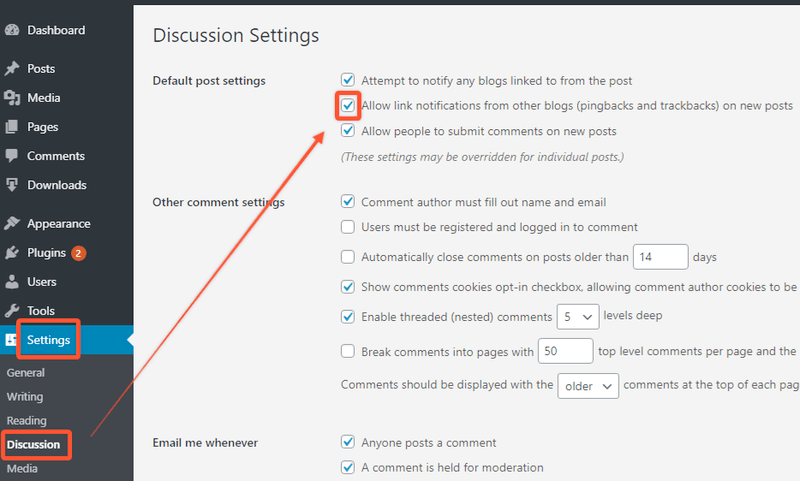Consider a mention or tag on Instagram and Facebook. When your article is tagged or referenced, Pingback tells you. The primary purpose of pingback mimics both, but with a twist. So, what is a pingback exactly?
If the other blog permits the function, WordPress describes pingbacks as a sort of automatic comments that are generated when you link to another blog article. I am aware that that is still quite a mouthful. Examine its operation to better comprehend what a pingback is.
What Is a Redirect?
WordPress provides a pingback signal to other blog owners when connecting to their material. Only bloggers who have enabled the pingback option will receive the notification.
How Does the Pingback Function?
Remember that a pingback is an automatic notice of a link. This image of two bloggers demonstrates how it works, supposing both WordPress blogs are pingback-enabled.
- A connects to another article on B’s website in a blog post.
- A makes the post public.
- WordPress will transmit a pingback to the site of B.
- The pingback will then display within the post’s comment area. This is how pingbacks appear:
As if you said, “Hey, I just linked to this website in my blog article.” That is it!
Please note that pingbacks are an integral part of the WordPress platform. If you wish to do this action on a platform other than Blogger, you must use a trackback. Unlike pingback, however, trackback does not immediately function when blogs link to your material. Consider the following illustration:
- A (WordPress user) wishes to link to a certain post on B’s website in a blog post (Blogger).
- A visits B’s blog post and searches for the trackback URL in the comment area. Typically, it will appear as follows: trackback URL
- A copies the URL for the trackback and pastes it into the WordPress visual editor.
- A posts the item, which causes the pingback to appear on B’s blog.
Trackback has a somewhat distinct physical look since it comprises a content extract. You must also specify a particular URL for trackback, not the address bar URL. Other than this distinction, pingbacks and trackbacks are very identical.
Configure Pingbacks in WordPress
To utilize pingbacks, no technological skills are required. In fact, you may have unknowingly sent pingbacks to many blogs. It is possible if both your blog and the other blogs to which you have connected enable this functionality. If you want more control over this, use the following settings:

Deactivate or Activate Pingbacks
If you wish to allow or disable pingbacks, navigate to Settings > Discussion and check or uncheck the activation box.
Configure the WordPress forum settings to permit pingbacks.
When another blogger wishes to send a pingback, WordPress will give you a one-time approval request. To manage this, just navigate to Discussion Settings > Comment Moderation > Moderation queue and scroll down. You can accept or reject any pingbacks. Once granted, the blogger no longer need your permission to send more pingbacks. Everything is mechanized.
Turn off Self-Pingbacks
Each time you link to your own postings, you will receive a request for permission. This practice is known as self-ping. If you are a prolific writer who frequently refers to your earlier writings, this is definitely annoying. However, there is no cause for alarm since this issue may be easily resolved by removing self-pingbacks.
Simply replace the complete URL with the post’s slug. Consider the scenario where we wish to connect to our own post titled What Is WordPress?
Rather than utilizing the complete URL: /tutorials/what-is-WordPress
Please only use the slug:
what-is-wordpress
This eliminates the need to send the request twice. Occasionally, your visual editor will automatically rewrite the complete URL. However, simply switching to HTML editor will resolve the issue.
You may also block this with plugins such as No Self Pings and Disabler. Copy this code to your functions.php file if you are comfortable with PHP.
{code type=php}//remove pings to self
function no_self_ping( &$links ) {
$home = get_option( ‘home’ );
foreach ( $links as $l => $link )
if ( 0 === strpos( $link, $home ) )
unset($links[$l]);
}
add_action( ‘pre_ping’, ‘no_self_ping’ );{/code}
Do You Require the Pingback Function?
Pingbacks may be an effective strategy for expanding your website. It may cause readers of the linked blogs to click on your pingback, resulting in an influx of additional visitors. Additionally, the automatic comment might increase your participation within the blogger community.
However, your website may become vulnerable to harmful assaults and spam. Deactivate the pingback functionality to prevent such assaults, or install other defenses such as Cloudflare and Disable XML-RPC.
Whether you employ pingback or not, please exercise caution!



















